
views
Getting Your Hands Ready
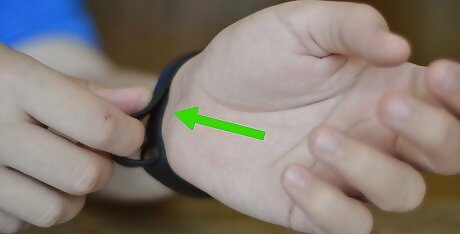
Remove all jewelry. Before you begin massaging your hands and fingers, be sure to take off any rings or bracelets that may get in the way.
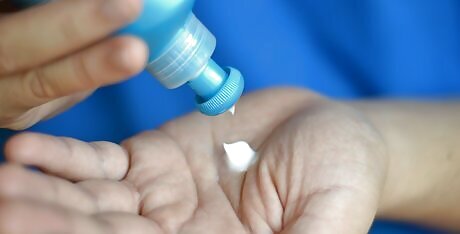
Moisturize your hands. For a smooth massage, it is best to first apply lotion or oil to your hand before, and during the massage, to keep your skin slick. This will allow your thumb and fingers to more easily slide across your skin so it won't become irritated by too much friction. However, some people would recommend not putting lotion on straight away, because some 'drag' is important for releasing fascia.

Loosen your hands up. Shake them out and wiggle your fingers about. Stretch your hands by flexing them as wide as you can, and then make a fist. Bend your wrists with your hands points down, and then flex your hand up and down several times. Continue to use these techniques for about one minute before you begin to massage your hands.

Pinch the tips of each finger and thumb on both hands. The pressure applied to your fingers should be firm, but not painful. A few seconds for each fingertip will do. After pinching the tops and bottoms of your finger and thumb tips, go back to each tip and pinch them again, this time squeezing from side to side.
Using a Variety of Massage Techniques
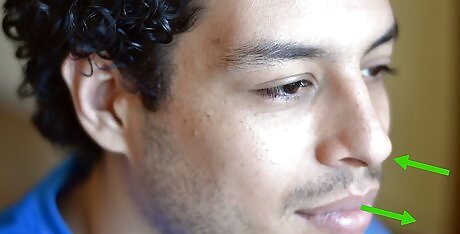
Remember to breathe. As you do all these techniques, breathe in through your nose while expanding your diaphragm (belly-breathing), and out through the mouth. Breathing is as important as the massage itself, and it may be wise to take ten of these deep breaths prior to and after the massage.

Use your thumb to do most of the work. Start by holding out one of your hands, keeping your fingers straight. Then, wrap your opposite hand's fingers around the back of your hand with your fingers facing straight up. Your thumb should be laying on your palm, and pointing towards you.
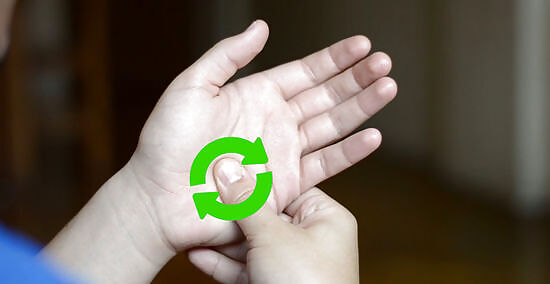
Move your thumb along the edges of your palm. This technique is most effective at massaging the pads of your palms just under your fingers and thumb, and the entire edge of your hand. Compress your palm with your thumb, using short, caterpillar-like movements, going up and down, and working your way from the inside to the outside of your palm. Apply the amount of pressure you are comfortable with. Start off using light pressure, and then work your way towards a deeper massage. This will help you find tender, sore, or tight spots.

Locate the bones in the hand. They will be long, like a continuation of the fingers through the palm. Pinch the base of the hand, in between the bones, and glide upwards. Continue using short strokes when rubbing.
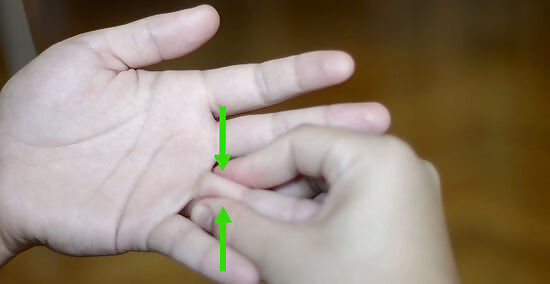
Include your fingers. When you reach the finger, continue to pinch up the finger with a firm pressure. Inch your thumb up and down each finger, starting at the balls, and working your way up slowly to the tip of your finger. Squeeze along the sides of your fingers, too. Repeat this for every finger.
Focusing on Muscle Tissue

Reverse your hand placement. Switch your massaging hand so that your hand is wrapped over the top with your fingers facing down. Your thumb should still be laying on your palm. Now, you can work on the pressure point area of your palm, between your thumb and index finger, which is a very sensitive area.

Go to the space between the thumb and the index finger. There is a muscle here that holds most of the tension in the hand. Here, you will do some deep compressions, kneading, or gliding. You can do this by either pinching with the thumb and index finger or using your knuckles.
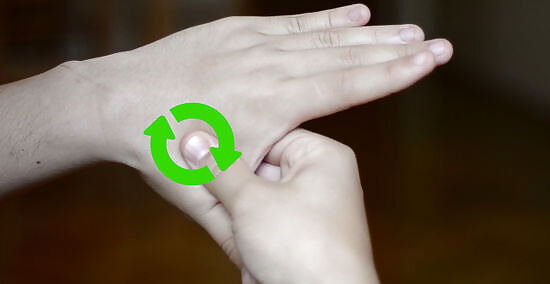
Apply pressure to the webbed area. Use your thumb and index finger to make small, circular motions that will facilitate tension release. Hold pressure as long as it feels comfortable. It should result in a dull ache that is not unpleasant, but may take some getting used to over time. Keep a firm hold and tug at the skin gently until the fleshy web snaps away from your grasp. Repeat this process on the skin between all of your fingers.

Massage your forearm. If you find that most of your hand pain stems from the thumb, you can continue this work down your forearm on the side the thumb is on. One of the thumb muscles connects near the elbow, so it's important not to overlook this as a potential cause of pain.
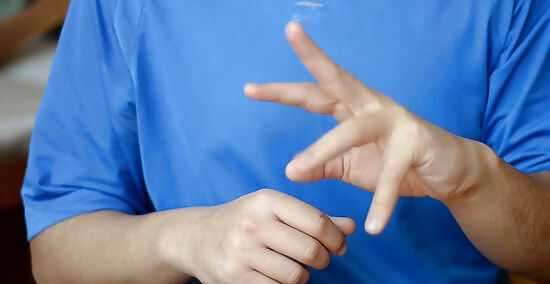
Shake it out. After you are finished with your very relaxing hand massage open and close your hand and wiggle your fingers. You can now repeat this massage on your opposite hand.

















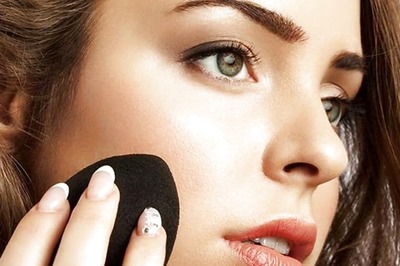


Comments
0 comment